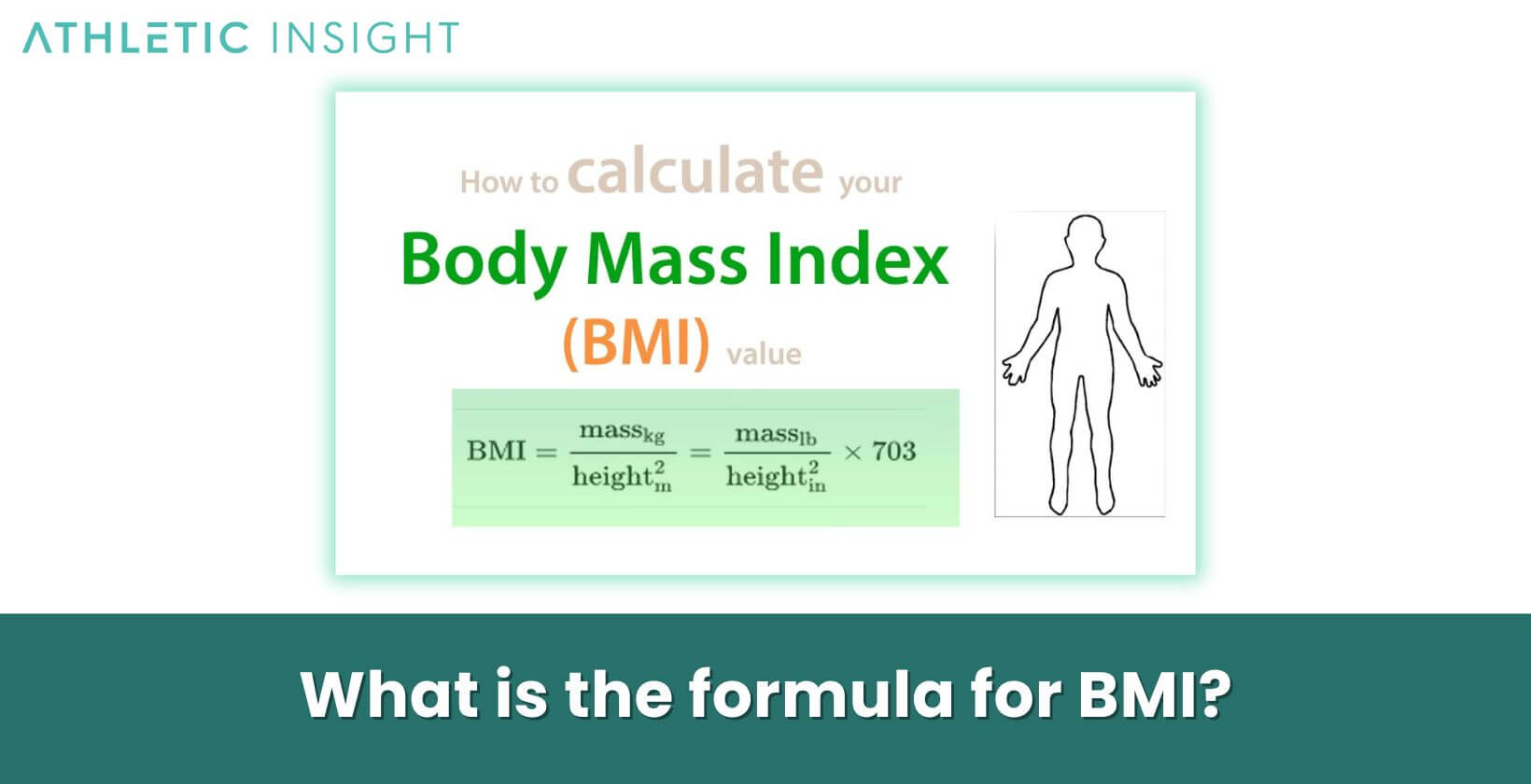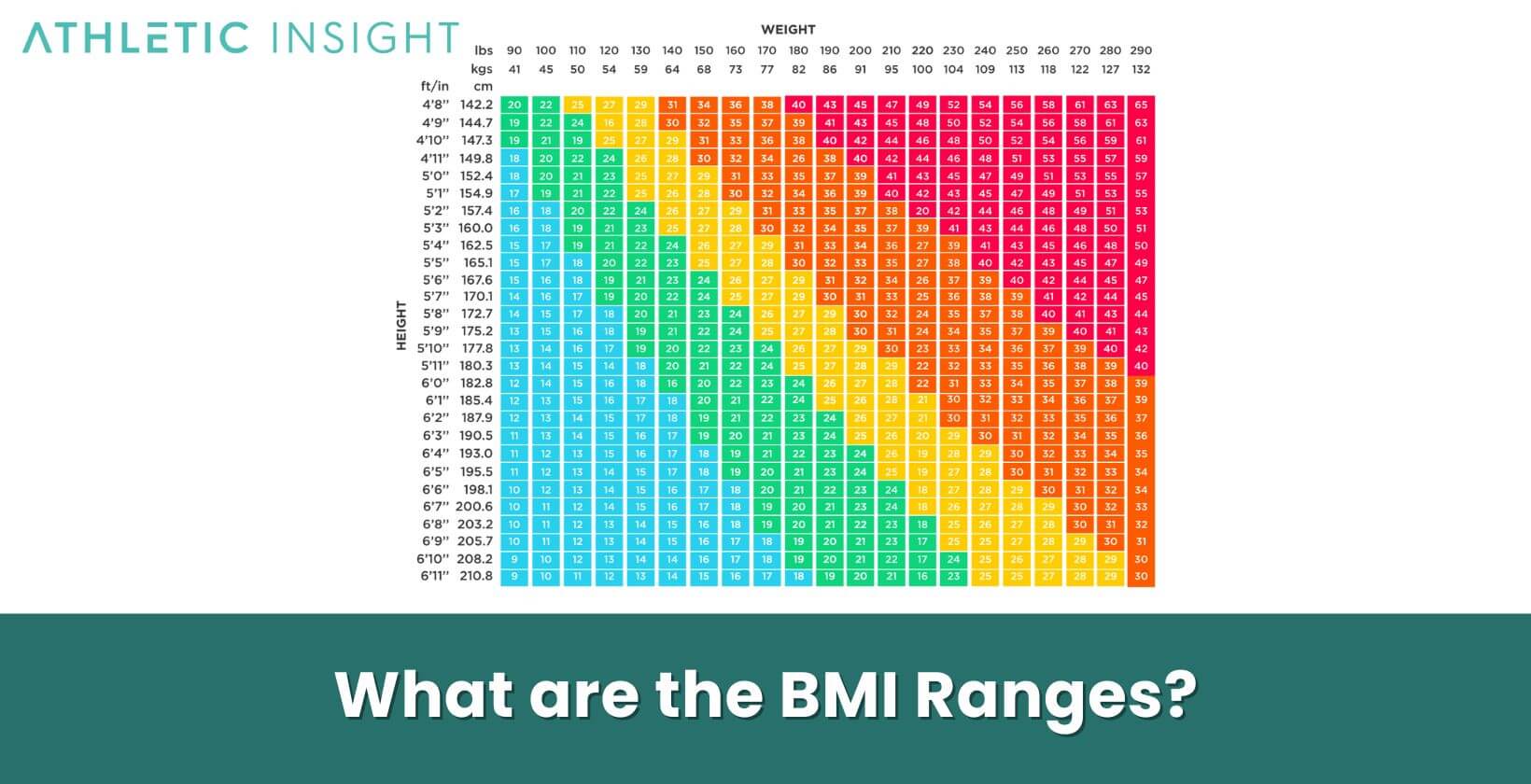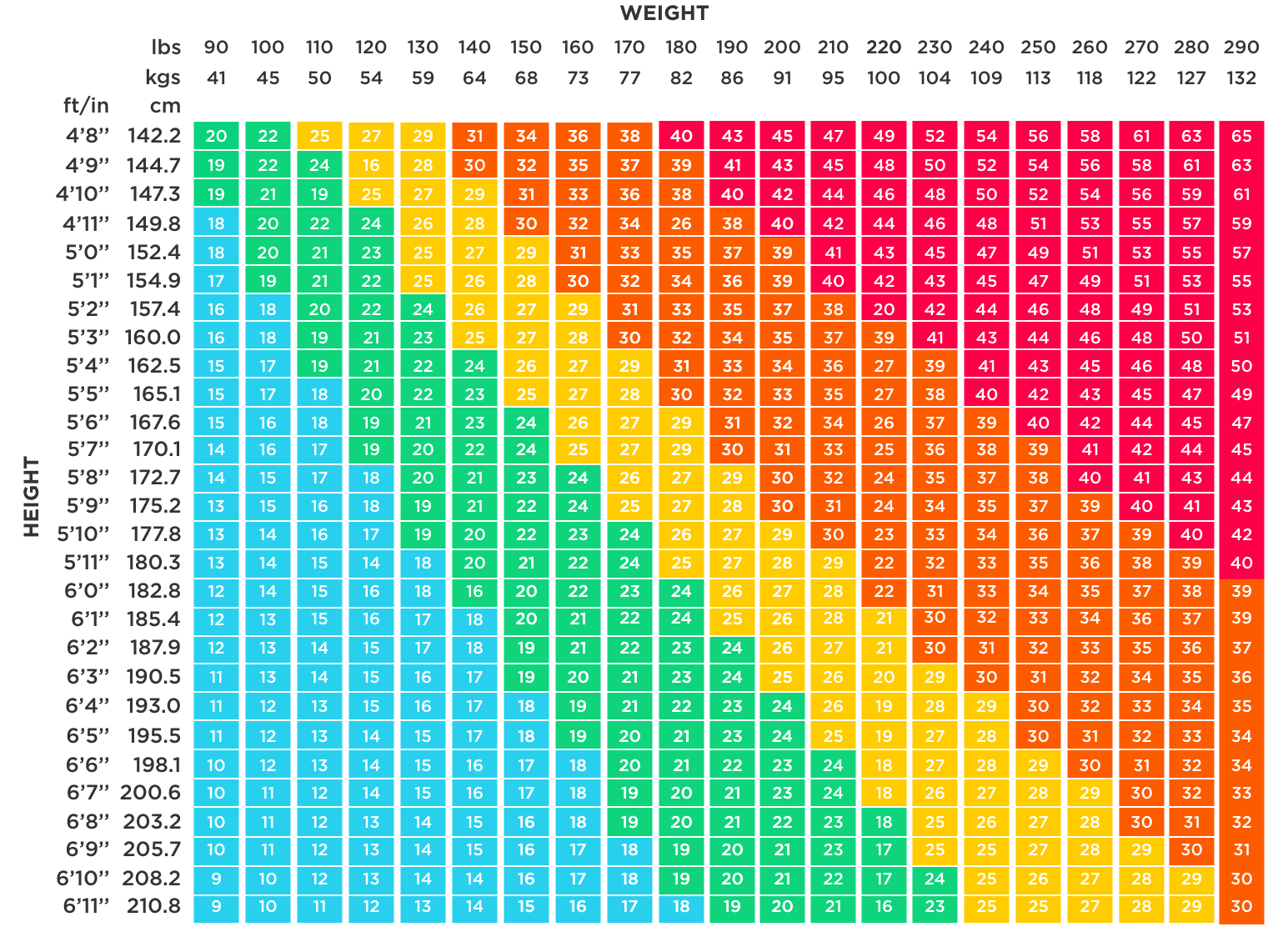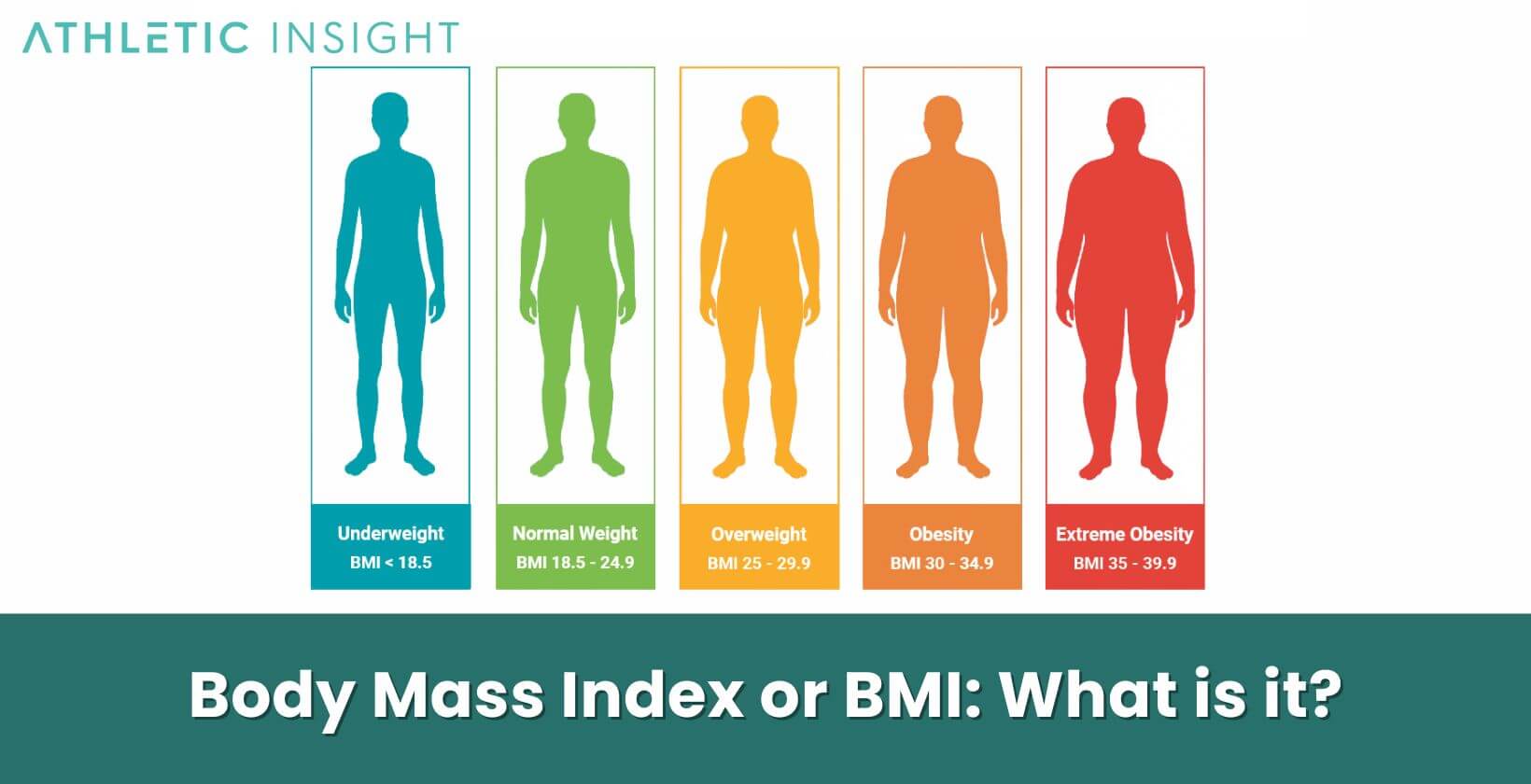When discussing health, nutrition, and fitness, you might often hear the term “Body Mass Index” or more commonly, “BMI.” It serves as a fundamental tool for gauging whether a person’s weight is in a healthy range considering their height. The concept is simple but holds great significance. It gives individuals and health professionals a reference point to determine possible weight-related health risks.
While widely used, it’s essential to view BMI as an initial screening tool. It does not directly measure body fat and might not always reflect the health status of an individual. For a comprehensive assessment, one should couple BMI with other tests and evaluations.
What exactly is a BMI?
Body Mass Index, or BMI, is a numerical value derived from an individual’s height and weight. It’s a method to quantify the amount of tissue mass (muscle, fat, and bone) in an individual and then categorize that person as underweight, normal weight, overweight, or obese based on that value. This categorization aims to identify potential health risks associated with being under or overweight.
Though it provides useful insights, it’s essential to realize that BMI doesn’t directly measure body fat. For instance, an athlete might have a high BMI due to increased muscle mass and not excess fat. So, while BMI is informative, it’s just one piece of the puzzle in evaluating overall health.
What does BMI stand for?
The acronym BMI stands for “Body Mass Index.” It’s a standard tool used globally for identifying whether a person’s weight is appropriate for their height. By dividing a person’s weight in kilograms by their height in meters squared, one arrives at their BMI value. This number then falls into specific categories, helping to suggest if an individual might be underweight, at a healthy weight, overweight, or obese.
Though straightforward and widely utilized, it’s imperative to understand the limitations of BMI. It doesn’t distinguish between weight from muscle or from fat. So, while it can give a general overview, it’s always best used in combination with other health indicators for a more accurate picture of one’s health.
What is the formula for BMI?
The BMI is a calculation based on an individual’s weight and height. Specifically, it is computed by taking a person’s weight in kilograms and dividing it by the square of their height in meters. This formula provides a number that indicates one’s body weight category relative to height, a key indicator of health risks related to body fatness. This method, although widely accepted, is a general guideline and might not account for muscle mass or distribution of fat in some individuals.

For those more accustomed to using pounds and inches, there’s an alternative formula: Multiply your weight in pounds by 703, then divide that result by the square of your height in inches. Both formulas aim to make understanding your health a little easier, acting as an initial screening tool for weight categories.
How to Calculate BMI?
To calculate BMI, you first need to measure your weight in kilograms and your height in meters. Once you have these two numbers, divide your weight by the square of your height. The resulting number is your BMI. So, for instance, if you weigh 70 kilograms and are 1.75 meters tall, your BMI would be calculated as follows: 70 divided by (1.75 x 1.75) = 22.86.
BMI = (Weight (lbs.) x 703) / (Height (in.) ^ 2)
If you’re working with pounds and inches, the method slightly varies. First, measure your weight in pounds and your height in inches. Multiply your weight by 703. Then, divide the result by the square of your height in inches. This will provide your BMI, helping you decipher which weight category you fall into based on standard guidelines.
Why is it important to calculate BMI?
Your BMI acts as an easily accessible screening tool to identify potential weight problems in adults. While it doesn’t measure body fat directly, it correlates well with more direct measures of body fat, making it a practical choice for large-scale health assessments. Being aware of one’s BMI can indicate whether they’re at risk for weight-related diseases, such as heart disease, high blood pressure, type 2 diabetes, and certain cancers.
Understanding one’s BMI can guide individuals towards healthier lifestyle choices. While BMI isn’t the sole indicator of health, it offers a starting point. From there, additional tests and evaluations can provide a clearer picture of an individual’s overall health status.
What is the use of Body Mass Index?
Body Mass Index serves multiple purposes in the realm of health and fitness. Firstly, it’s a basic tool to categorize an individual into different weight statuses, from underweight to obese. Such categorization can provide a preliminary indication of potential health concerns or risks associated with each category. The ease of its calculation makes it particularly useful in both clinical settings and everyday health assessments.
Additionally, public health agencies and medical institutions rely on BMI data to evaluate the overall health of populations, gauge the prevalence of obesity, and develop public health initiatives. While BMI doesn’t provide a comprehensive understanding of an individual’s health, its widespread use helps draw attention to weight-related health risks at both individual and community levels.
What are the BMI Ranges?
There are established categories for BMI values to help individuals understand where they stand in terms of weight relative to height. Each range provides insights into potential health implications, serving as a prompt for further health evaluations if required.

The standard categories, recognized internationally, are as follows: Underweight, Normal weight (or Healthy weight), Overweight, and Obese. Each of these categories corresponds to a specific range of BMI values, informing individuals of their weight status and any associated health risks.
- Underweight Range
- Healthy Weight Range
- Overweight Range
- Obese Range
1. Underweight Range
When an individual’s BMI falls below 18.5, they are classified as ‘Underweight’. Being underweight can indicate malnutrition, eating disorders, or other underlying health conditions. While many focus on the dangers of being overweight, it’s crucial to understand that being significantly underweight carries its own set of health risks.
Chronic health issues, weaker immunity, fragile bones, and fertility issues are among the concerns associated with being underweight. It’s imperative for individuals in this range to seek medical advice, ensure they are getting adequate nutrition, and address any potential underlying health issues.
2. Healthy Weight Range
A BMI value between 18.5 and 24.9 is considered to be within the ‘Healthy weight’ range. People in this category are generally believed to have a balanced weight in relation to their height, leading to a reduced risk of certain chronic diseases and conditions. Being in this range suggests a good balance of body fat to lean mass, though individual differences always exist.
While this is an ideal range for many, it’s still essential to maintain a balanced diet, engage in regular physical activity, and undergo periodic health screenings. A healthy BMI value doesn’t negate the importance of other health metrics or the value of an overall active and nutritious lifestyle.
3. Overweight Range
Individuals with a BMI value between 25 and 29.9 fall into the ‘Overweight’ category. Being overweight implies that one carries excess weight, which may be from body fat, muscle, bone, or body water. This range is a signal for individuals to evaluate their lifestyle habits, as it can lead to increased risks of several chronic diseases.
From cardiovascular diseases to diabetes, the health implications of being overweight can be severe. As with other categories, the BMI alone isn’t a comprehensive indicator, but it provides an initial assessment, guiding individuals toward healthier choices or seeking further medical advice.
4. Obese Range
Falling within a BMI of 30 or above places an individual in the ‘Obese’ category. Obesity signifies a high amount of body fat in relation to lean body mass. It’s not just an aesthetic concern; it poses a noticeable health risk. Individuals in this range are more susceptible to chronic conditions like heart disease, diabetes, high blood pressure, and even certain cancers.
Obesity often requires a multifaceted approach to address. Dietary changes, increased physical activity, behavioral shifts, and sometimes even medical interventions might be necessary. Regular check-ups and consultations with healthcare professionals become imperative for those in the obese range to ensure their well-being and mitigate health risks.
What does a BMI Chart look like?
A BMI chart visually represents the relationship between weight and height, offering a quick reference to determine one’s BMI category. The chart typically uses a grid format, with height on one axis and weight on the other. By finding the intersection point of one’s height and weight on the chart, they can quickly discern their BMI category.

Most charts color-code the different BMI categories for easier interpretation, making it simpler for users to identify if they’re underweight, of healthy weight, overweight, or obese. While it’s a handy tool, it’s always essential to remember that BMI is a general guideline, and individual health concerns or conditions might not be fully encapsulated by the chart.
What is the normal BMI for adult men?
For adult men, a BMI between 18.5 and 24.9 is deemed ‘Normal’ or ‘Healthy’. It suggests an optimal balance between height and weight, leading to reduced risks of certain health-related issues. Men within this range generally have an appropriate amount of body fat, but individual factors, like muscle mass, can vary.
It’s worth noting that while this range is optimal for many men, it’s vital to consider other health metrics and factors. Muscle distribution, waist circumference, and overall fitness levels also play roles in determining health. Thus, even if one’s BMI is in the ‘Normal’ range, it’s essential to maintain an active, balanced lifestyle.
What is the normal BMI for adult women?
Similar to men, the ‘Normal’ or ‘Healthy’ BMI range for adult women is between 18.5 and 24.9. This range indicates a balanced weight concerning height. Women in this bracket typically possess an appropriate body fat percentage, but, as always, individual variations exist.
It’s important to emphasize that women naturally tend to have a higher body fat percentage than men. Factors such as body type, muscle distribution, and hormonal variations can influence BMI. Even if a woman’s BMI lies within the ‘Normal’ bracket, it remains crucial to adopt a healthy lifestyle, encompassing a balanced diet and regular exercise.
How does BMI use to determine health risks?
Your BMI serves as a universal metric that relates weight to height, offering insights into potential health implications. An elevated BMI, especially when in the overweight or obese categories, correlates with heightened risks of numerous health problems. Such concerns range from heart ailments, respiratory issues, to metabolic diseases like diabetes.
On the flip side, a BMI in the underweight range can signal malnutrition, weak bone density, and reduced immunity. While BMI provides a preliminary assessment of health risks associated with weight categories, it’s essential to understand it as a broad indicator, not a detailed health evaluation. Individual factors, genetics, muscle mass, and lifestyle choices play a role in overall health, beyond just the BMI.
What are the health risks if you have an underweight BMI?
Being underweight, indicated by a BMI below 18.5, brings its own set of health concerns. Such a status can point towards malnutrition, implying that the body isn’t receiving the nutrients it needs for proper function. This can lead to weakened immunity, making one more susceptible to infections and illnesses.
Other potential health risks include bone density loss, which raises the chances of fractures; fertility issues due to hormonal imbalances; and hair, skin, and teeth problems stemming from nutrient deficiencies. A persistently low BMI might also signal underlying health conditions or disorders, which necessitates medical consultation.
- Malnutrition
- Bone Density Loss
- Fertility Issues
- Hair, Skin and Teeth Problems
What are the health risks if you have an overweight BMI?
Being overweight, marked by a BMI between 25 and 29.9, is often associated with a host of health concerns. Excess weight can strain the body’s systems, leading to conditions like high blood pressure, which is a precursor to heart diseases. Carrying extra weight can affect cholesterol levels, promoting arterial blockages and posing cardiovascular risks.
Beyond heart-related issues, an overweight BMI can be linked to the onset of type 2 diabetes, certain types of cancer, and even mental health problems like depression or anxiety. Joint issues, like osteoarthritis, can be exacerbated by excess weight. Addressing and managing one’s weight becomes essential to reduce these potential health risks.
- High Blood Pressure
- Type 2 Diabetes
- Cancer
- Mental Health Problems
- Joint Issues
How does BMI help with Exercising?
When diving into a fitness regime, having a starting reference point aids in setting and tracking progress. That’s where BMI comes in. It provides a foundational assessment of one’s weight in relation to their height. Knowing one’s BMI can guide exercise routines, helping to set weight management or health goals.

For instance, someone in the overweight range might focus on exercises that promote weight loss, while an underweight individual might concentrate on gaining muscle or weight through strength training. Having clarity on one’s BMI helps in tailoring exercise routines to personal needs, promoting optimal health benefits.
What are the best exercises to achieve a standard BMI?
To achieve and maintain a standard BMI, a combination of cardiovascular exercises and strength training is recommended. Cardiovascular exercises, such as brisk walking, jogging, swimming, or cycling, help in burning calories and reducing excess weight. Engaging in these activities for at least 150 minutes a week can offer significant health benefits.
Strength training, involving weights or resistance bands, contributes to muscle building and retention. It’s advised to include these workouts at least two times a week. Besides directly impacting muscle and fat ratios, strength training also raises the metabolic rate, assisting in weight management. Remember to consult a fitness professional or physician before starting any new exercise regimen.
Is weightlifting good for BMI?
Yes, weightlifting is beneficial for BMI. Engaging in weightlifting or resistance training aids in building lean muscle mass. While it might seem counterintuitive, increasing muscle mass can elevate one’s weight; however, muscle is denser and more compact than fat, contributing positively to body composition.
With more muscle, the body naturally burns more calories even at rest, a phenomenon known as increased basal metabolic rate. This aids in more effective calorie burning and, over time, can lead to fat loss and a healthier BMI. Again, it’s imperative to approach weightlifting with proper techniques to prevent injuries and reap maximum benefits.
Is BMI necessary when exercising?
No, BMI isn’t strictly necessary when exercising. Physical activity and fitness routines should primarily center around individual health goals, comfort levels, and personal preferences. While BMI offers a general insight into weight status in relation to height, it doesn’t consider factors like muscle-to-fat ratio or overall fitness level.
Nonetheless, it can serve as a useful tool for setting initial weight management goals. It’s always beneficial to integrate various health metrics, including BMI, waist circumference, and overall strength and endurance levels, when crafting a comprehensive fitness plan.
Is BMI measurement for everyone?
No, the BMI measurement isn’t universally applicable. While it offers a general guideline for a broad spectrum of the population, there are exceptions. For instance, athletes with high muscle mass might register as overweight or obese due to the denseness of muscle, even though their body fat percentage is low.
Similarly, the elderly, who naturally have diminished muscle mass, might fall in the ‘Normal’ range but still have an excess of body fat. Pregnant women, children, and those with certain medical conditions might find BMI not entirely indicative of their health or fitness status. It’s always best to use BMI in conjunction with other health assessments for a more holistic view.
Is BMI Accurate?
While BMI offers a straightforward method to categorize individuals based on height and weight, its accuracy as a sole health metric is debated. BMI doesn’t differentiate between weight from fat and weight from muscle. Therefore, people with high muscle mass might be inaccurately categorized.
It also doesn’t account for the distribution of fat in the body; abdominal fat, for instance, poses more health risks compared to fat stored in other regions. For these reasons, while BMI can be a useful starting point, it should be used in tandem with other evaluations for a precise assessment of health.
What is the difference between BMI and Body Composition?
Body Mass Index (BMI) is a simple formula that uses height and weight to estimate your overall body fat, providing a general measure for a range between obesity and being underweight. However, it doesn’t distinguish between muscle and fat.
On the other hand, body composition assesses the proportion of fat and non-fat mass in your body, including muscle, bone, and organs. It offers a more detailed view of your physical makeup, helping to gauge fitness and health more accurately than BMI. Body composition measurements include body fat percentage, muscle mass, etc., which offers a comprehensive understanding of your body’s composition beyond just weight and height.



